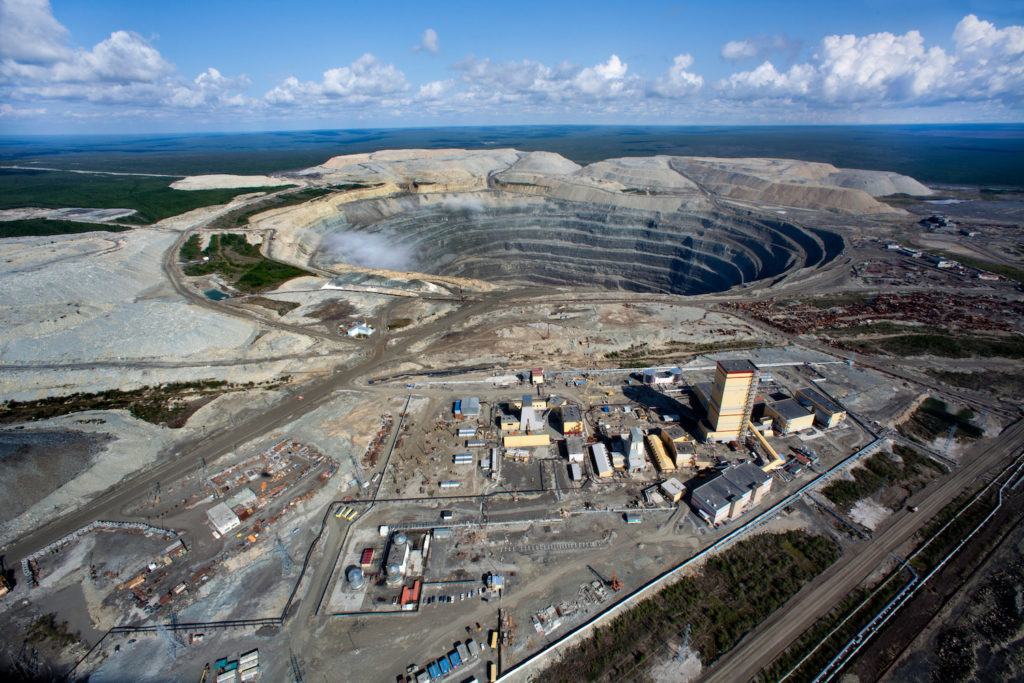Alrosa tests kimberlite for carbon capture potential


Alrosa has reported that testing of processed kimberlite from its mines has shown the potential for the material to completely offset the diamond miner's carbon emissions. The company says it has completed the first phase of a carbon sequestration study that is expected to continue until 2023.
Preliminary testing was completed in co-operation with Russian research centres on kimberlite samples from various stages of mining – extraction, processing and post-processing. Processed ore samples that had been placed in tailings storage tanks for a period of between one month and 10 years were compared with unprocessed kimberlite samples.
Alrosa says the initial results show that the CO2 absorption potential is comparable to – and in some scenarios several times greater than – the CO2 emissions of the entire Alrosa Group. CO2 absorption by kimberlite from the Udachnaya mine in Russia's Sakha Republic for example, could be as high as 80 kg per ton of processed raw material – nearly four times greater than Alrosa's average annual CO2 emissions from diamond production, the company says.
“If future research confirms the preliminary data found, we will have established significant potential for compensating greenhouse gas emissions in diamond mining through the ore’s ability to absorb carbon dioxide from the atmosphere,” said Mikhail Dubovichev, head of Alrosa's innovation and technology centre. “This discovery could mark a new step in the efforts to preserve our planet’s ecosystem.”
Alrosa isn't the only miner who's investigating the potential for carbon sequestration in mine tailings. De Beers is also conducting research in this area with the University of British Columbia's CarbMin Lab, as well as other partners.
Certain types of minerals have greater potential for carbon capture. Ultramafic rocks, including kimberlite, can contain reactive minerals that capture CO2 from the air and convert it to rock, where it's locked in a stable form. Crushing the rock speeds up the reaction.
Alrosa says transport and power are the biggest sources of greenhouse gas emissions in diamond mining. Although it says 90% of its power is generated by renewable sources and it is currently replacing diesel used in transport with natural gas, the company says it can only achieve its carbon neutrality targets through a combination of measures that could include carbon capture of CO2 from the atmosphere.
This article has been updated based on a correction issued from Alrosa.
Comments